There are 8 species of Pelicans on the planet and they all share one familiar feature; that huge bill that Pelicans are famous for. However, it’s not just their massive, gaping bills that make these birds so interesting. In this article, I am going to explore some amazing facts about Pelicans and answer the question “how long do pelicans live?”
Pelicans live between 10 to 43 years of age in the wild and much longer in captivity. An Australian Pelican called Percy survived to the age of 62 at Wellington Zoo. How long they live in the wild varies from species to species. Mortality rates in Pelicans can be as high as 70% in the first year.
Continue reading to discover more amazing facts about Pelicans. I am going to cover everything from where they sleep to how they eat. You will also learn why they have been called bubble wrap birds.
Where Do Pelicans Nest?
Pelicans nest in a variety of locations such as offshore islands, dense aquatic vegetation, islands in large lakes, mangrove forests, on the ground, along the shoreline of seas or lakes, and even in large trees. Where they nest depends upon the species and finding a location safe from predators.
Pelicans use a variety of materials for their nests. Spot-billed Pelicans for example construct a large nest from sticks on a low tree.
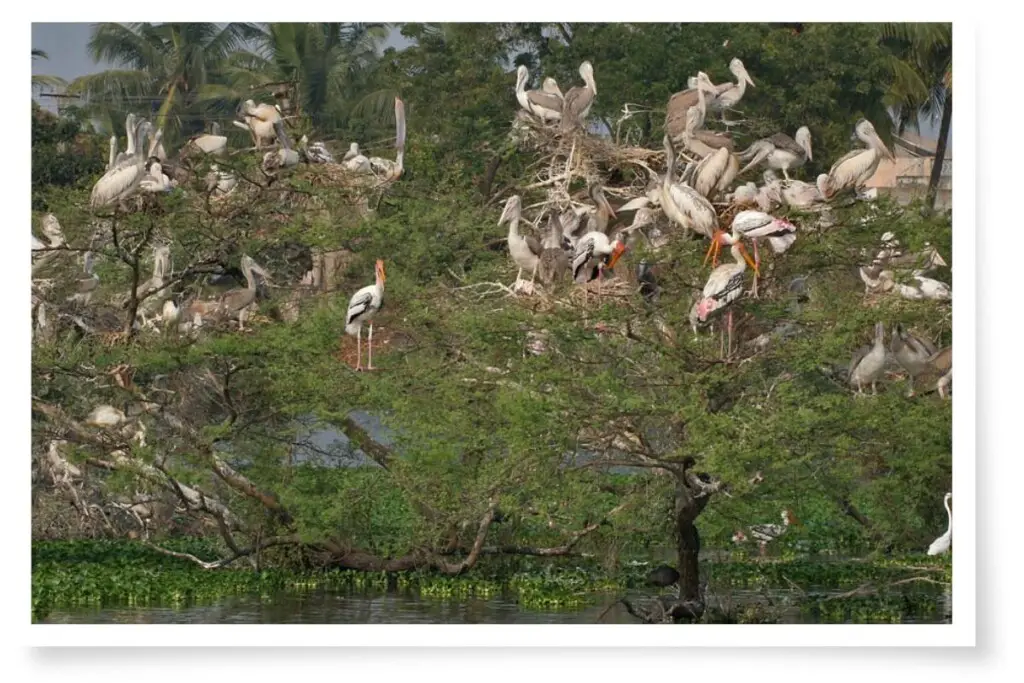
Great white pelicans throw caution to the wind and nest on the ground. They do however make use of the safety in numbers adage, nesting in large colonies. Their nests are usually constructed from reeds or sticks but populations in Africa will nest on bare rocks.
Now that you know how long pelicans live, find out which bird lives the longest in this article.
How Do Pelicans Eat?
Pelicans eat by tipping their heads back and maneuvering their catch to a swallowing position. As they do not have teeth, they swallow their prey whole. Their pouches act like a net, scooping up the prey along with up to 13 liters (3.4 gallons) of water. The water is squeezed out and not swallowed.
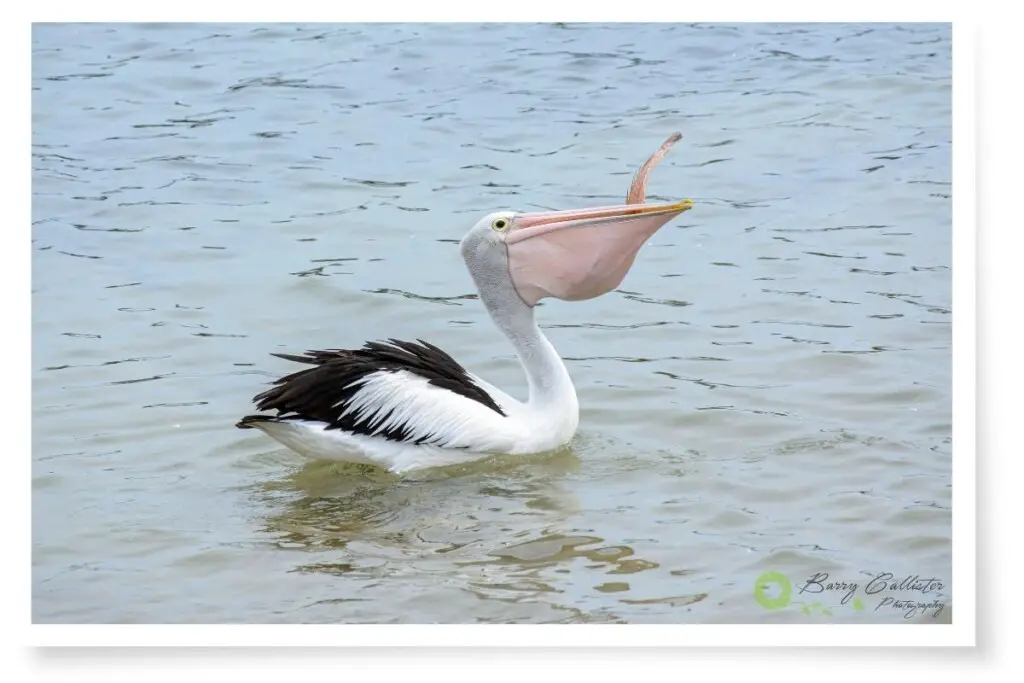
The brown pelican is the only pelican that dives to catch fish. This is usually a technique used by smaller birds such as Terns or Gannets.
They will impact the water at around 40 mph (64 kph). Watch the video below from Deep Look to learn more about how brown pelicans accomplish this astonishing feat:
Discover 10 Australian birds that eat fish in this post here on Birdwatch World.
Where Do Pelicans Sleep?
Pelicans sleep in large groups on sandbars. They also sleep on pilings, piers, docks, jetties, shorelines, on top of street lights, and in trees. They will sleep while standing or resting on their belly. The Peruvian Pelican is reportedly the only pelican to sleep while floating on the water.
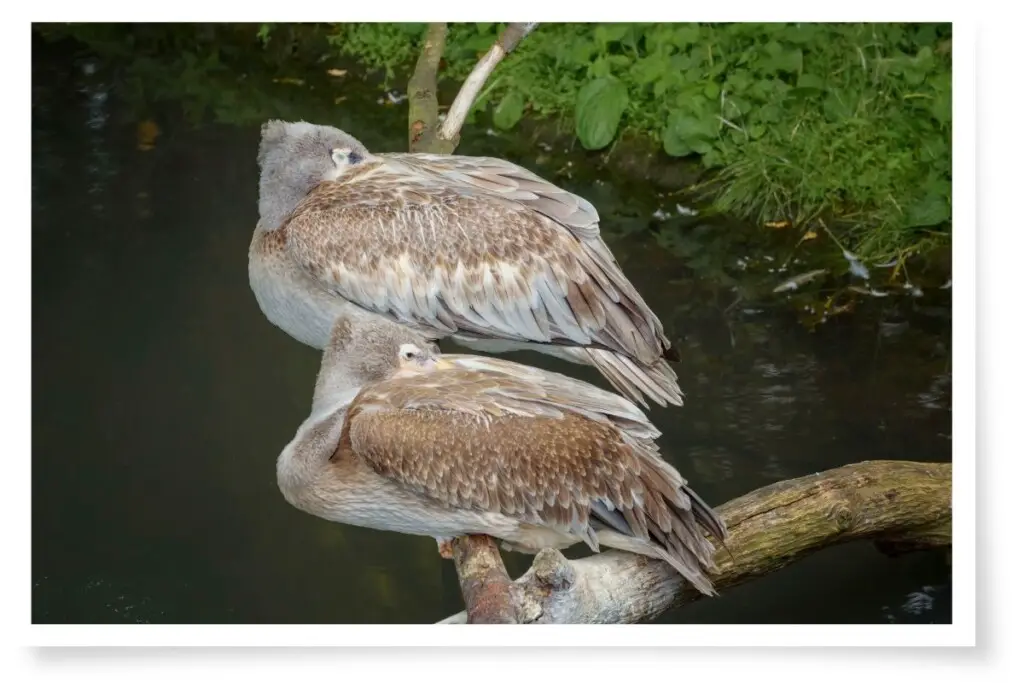
Australian pelicans will sleep on top of street lamps quite often. It’s not uncommon to see them resting on top of street lights even if they are not sleeping. Like the brown pelicans above, they will also sleep on logs or low branches near the water.
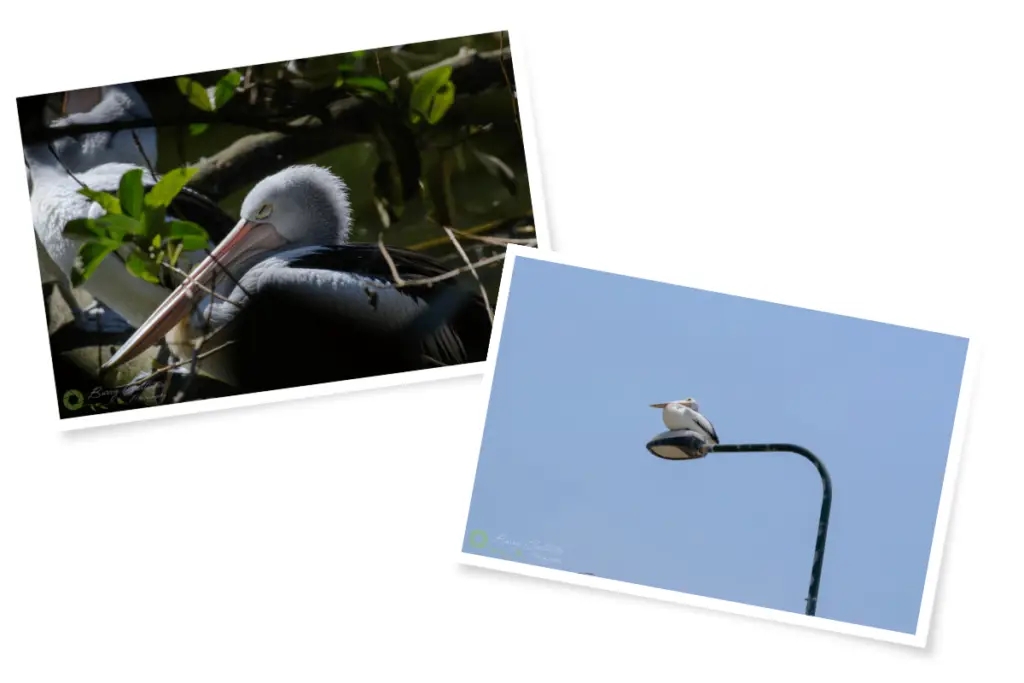
Many species of pelican will sleep standing up, either in shallow water or on land also. They are opportunists and will rest wherever they can. During the day they will rest near where they have been foraging.
Find out what time birds go to sleep in this article on my blog.
Pelican Species Of The World
There are 8 species of Pelican in the world: the American White Pelican, the Brown Pelican, the Peruvian Pelican, the Great White Pelican, the Australian Pelican, the Pink-backed Pelican, the Spot-billed Pelican, and the Dalmatian Pelican. They are found on every continent except Antarctica.
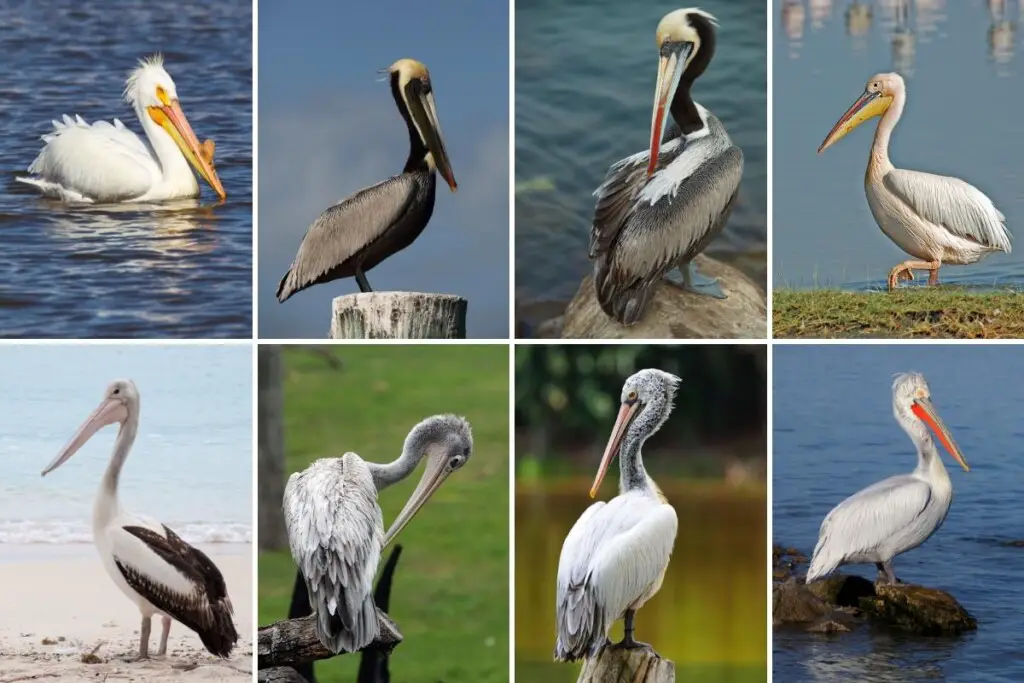
Bottom row left to right – Australian, Pink-backed, Spot-billed, Dalmatian
From the images above you can see that each of the 8 species of pelican has the same basic body shape but they each have different colors and/or features.
Two such features that stand out are the horn on the bill of the American White Pelican (top left) and the ruffled crop of “hair” on the Dalmatian Pelican (bottom right).
Where Do Pelicans Live?
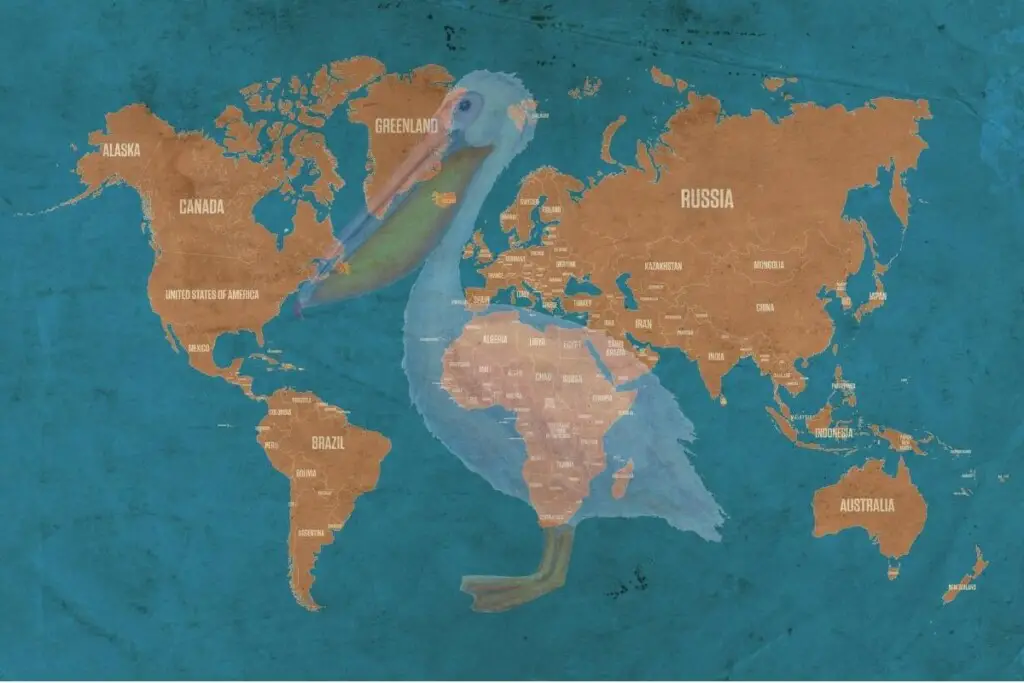
As you read above, pelicans are found on every continent except for Antarctica. In this section, I will explore where each species is found in the world and what kind of habitat they prefer.
Pelicans live on or near water as their diet consists of fish and other aquatic creatures. They are found near rivers, estuaries, bays, lakes, deltas, lagoons, reservoirs, billabongs, swamps, drainage channels, saltpans, fishing ports, seasonal ponds, tanks, creeks, and flooded areas.
Let’s explore each of the 8 species, where in the world they are found, and the habitat they prefer.
Learn more about the 8 pelican species in this article.
American White Pelican
American White Pelicans are found mostly in the western and southern parts of North America. Their range extends up into Canada where they can be seen in British Columbia, Alberta, Saskatchewan, Manitoba, and Ontario.
Southward, their range extends as far south as the coasts of Guatemala and El Salvador.
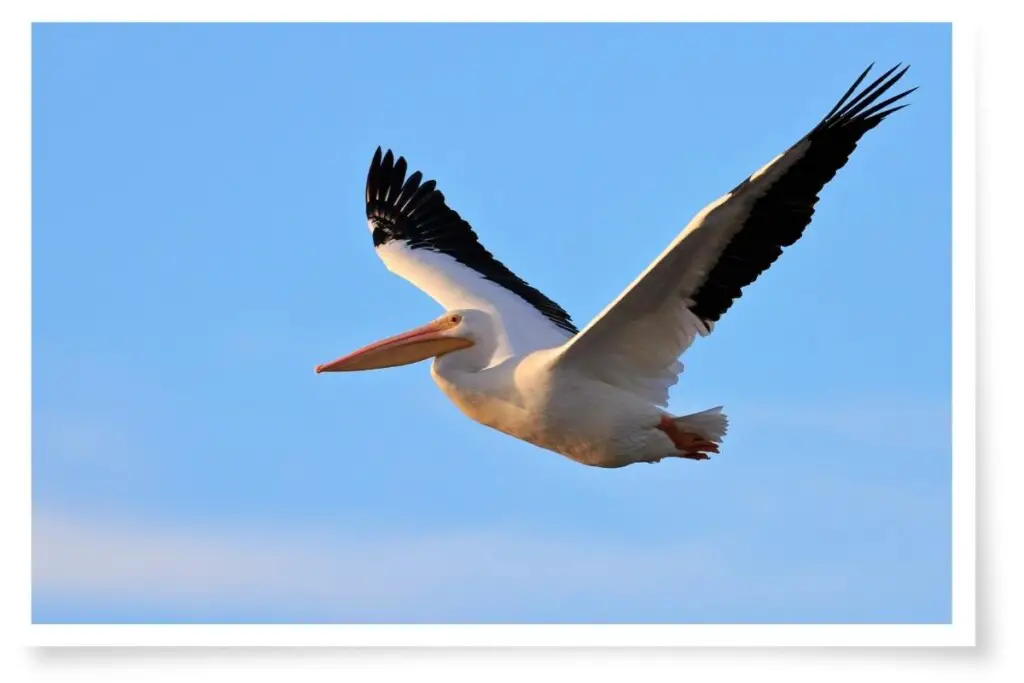
American white pelicans prefer inland waters such as marshes, lakes, and rivers.
Brown Pelican
Brown pelicans are coastal birds and prefer the warm marine environments from North America to South America.
In the west, they are found from Washington in the north, all the way south to the coast of Peru, and also in the Galapagos Islands. In the east, they can be found from Chesapeake Bay in Maryland, south to the coast of French Giana in South America.
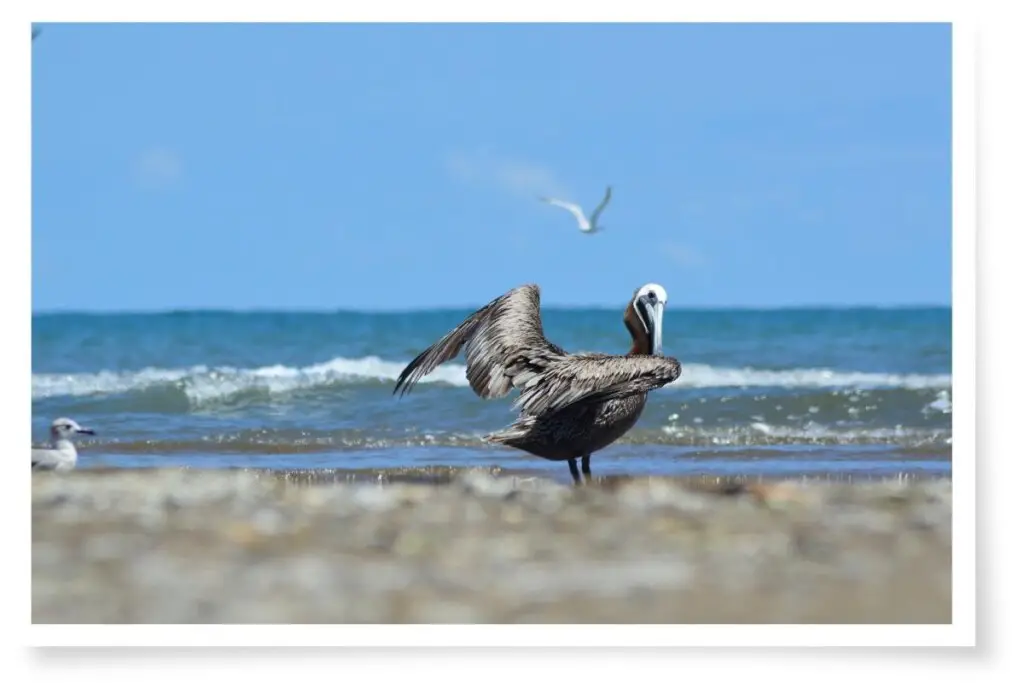
The brown pelicans’ habitat consists of coastal waters and estuaries. They will forage offshore but need to remain close to undisturbed dry roosting sights. If they remain on water for longer than an hour they become waterlogged and cannot fly.
Discover the amazing techniques of how birds land in this Birdwatch World post.
Peruvian Pelican
Peruvian Pelicans are found on the west coast of South America from southern Ecuador to southern Chile.
They are strictly marine birds and rarely found inland. They prefer shallow waters close to the shore, including estuaries and bays.
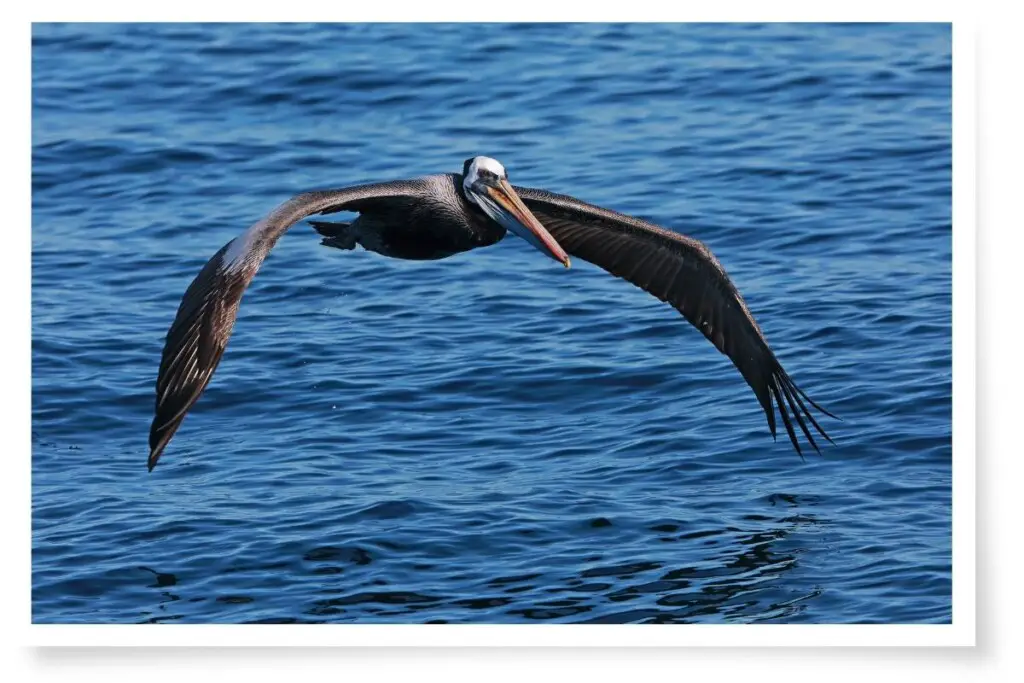
Great White Pelican
Great White Pelicans have a rather scattered range across Europe, Africa, and Asia. Rather than explain it, I thought it best to include the map below:
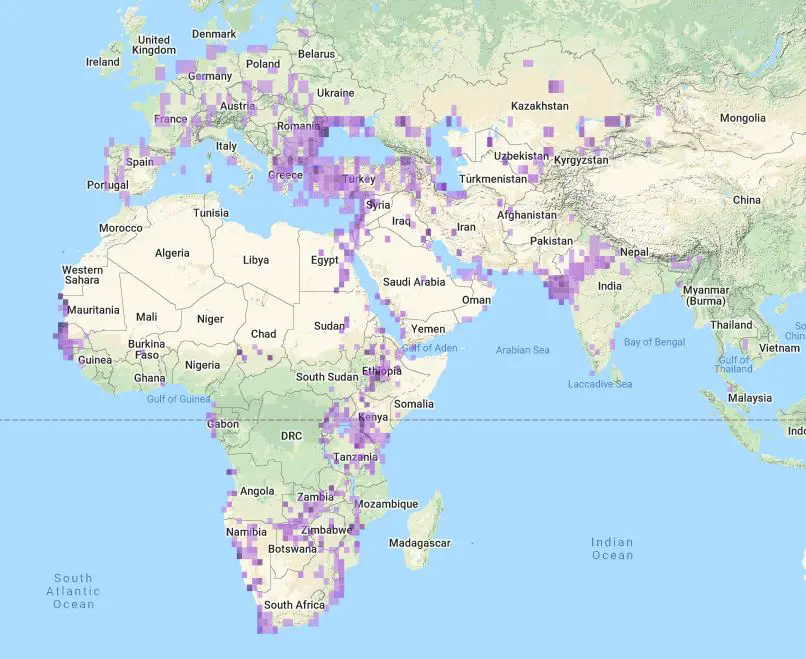
In Eurasia, they will gather in fresh or brackish lakes, lagoons, marshes, and deltas. African populations prefer alkaline or freshwater lakes and sometimes marine waters.
Great white pelicans have been recorded at altitudes as high as 1372 meters in Nepal.
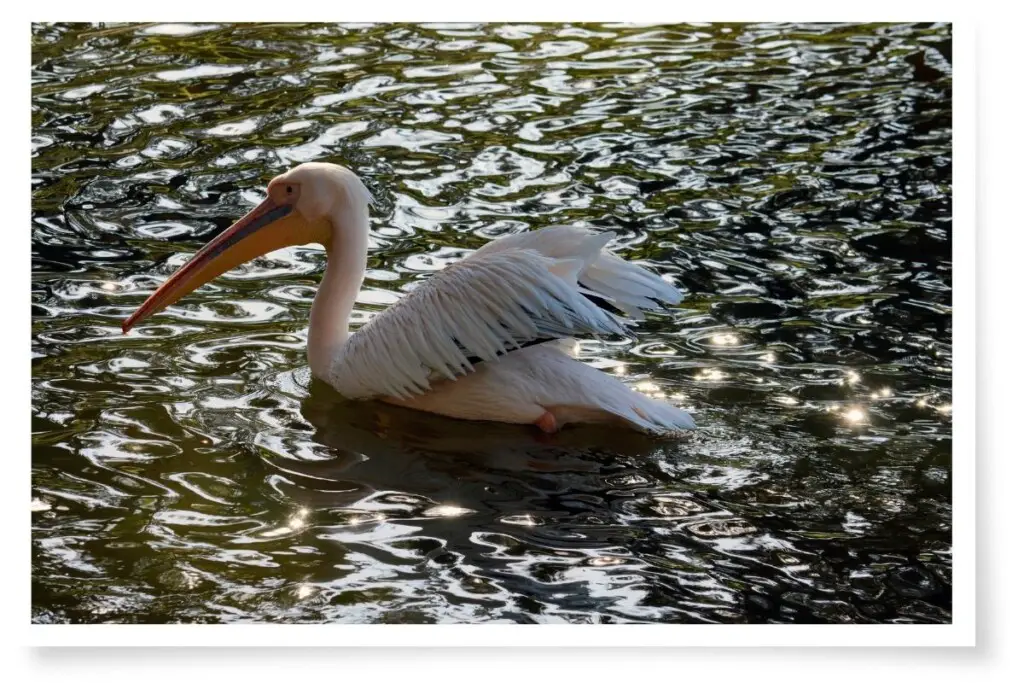
Australian Pelican
Australian Pelicans are found throughout Australia, Papua New Guinea, the Solomon Islands, Indonesia, and even New Zealand.
The Australian pelican is not fussy about where it lives. Pretty much anywhere water is found, either inland or coastal, you can find them.
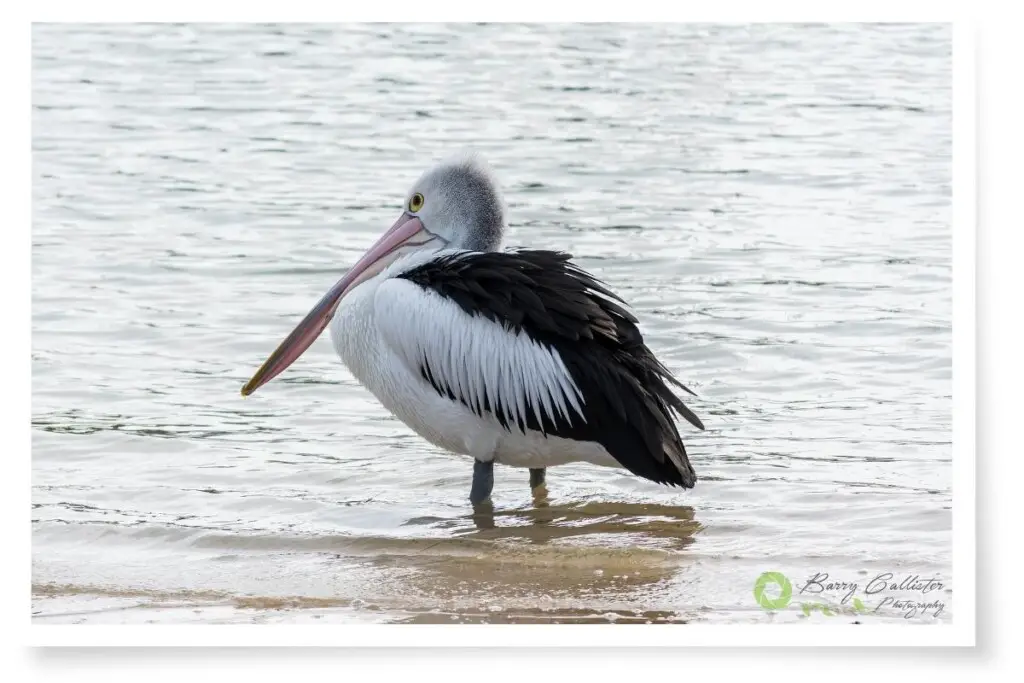
Large lakes, reservoirs, billabongs (branches of a river forming a stagnant pool), rivers, estuaries, swamps, temporarily flooded areas, drainage channels, saltpans, coastal lagoons, and fishing ports are all part of the habitat of Australian pelicans.
Meet 9 beautiful yellow birds from Australia in this article on my blog.
Pink-backed Pelican
The Pink-backed pelican is a resident of tropical and subtropical Africa in countries such as Senegal, Sudan, Somalia, South Africa, Namibia, Arabia, and also extreme southeast Egypt.
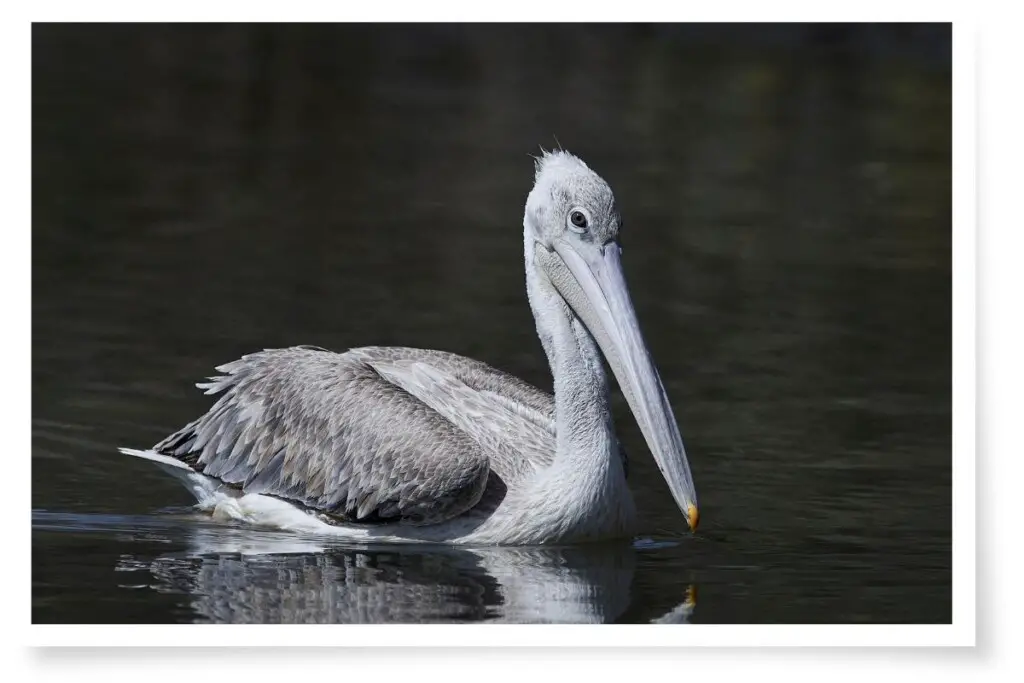
These beautiful birds have a varied habitat which includes freshwater lakes, swamps, rivers, and seasonal ponds. Sometimes they will be seen on the coast in bays or on alkaline lakes. Pink-backed pelicans will even spend time in dry areas if locusts are plentiful.
They will roost on cliffs, coral reefs, dunes, and also on piers or walls in populated areas as they are quite tolerant of humans.
Spot-billed Pelican
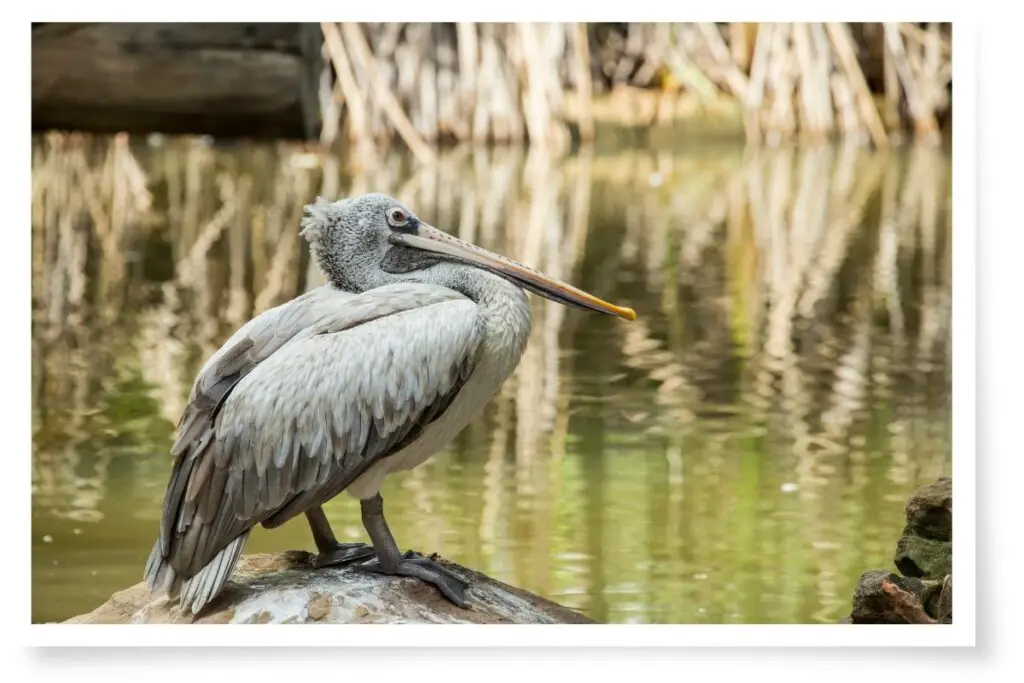
Spot-billed pelicans are found throughout Asia in parts of India, Sri Lanka, Cambodia, Sumatra, Nepal, Myanmar, Thailand, Laos, and Vietnam.
These birds live in a variety of aquatic places such as marshes, rivers, estuaries, reservoirs, tanks, flooded fields, lakes, brackish lagoons, creeks, quiet backwaters, and jheels (in India: a pool marsh or lake remaining from inundation).
Dalmatian Pelican
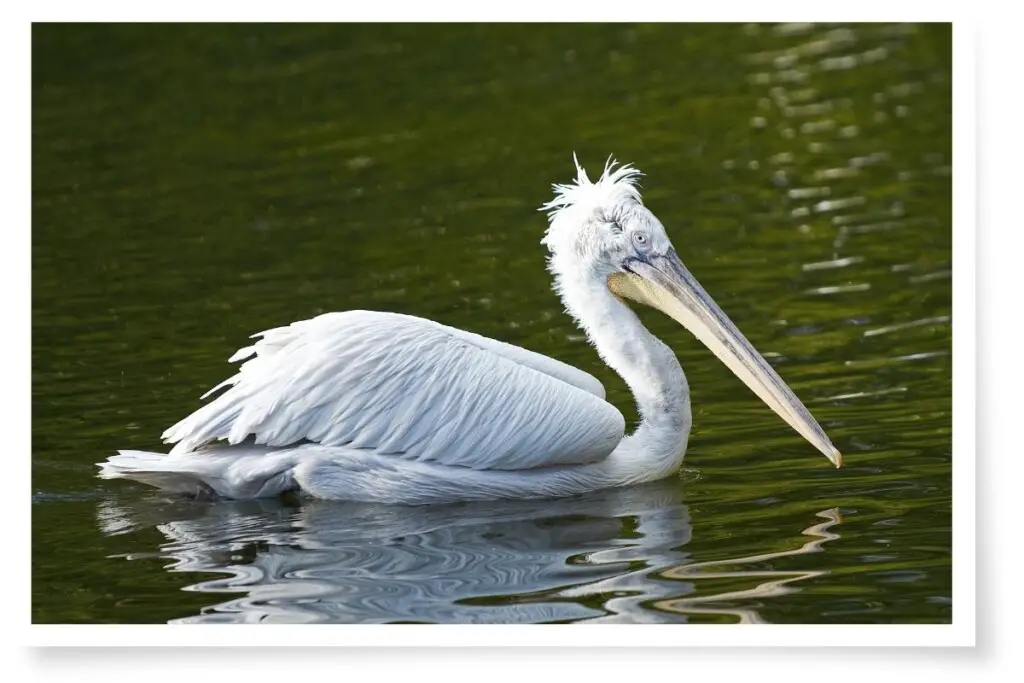
Dalmatian Pelicans live in southeastern Europe and Asia. They can be found in Serbia, Montenegro, Greece, Ukraine, Russia, Kazakhstan, Mongolia, Turkey, Azerbaijan, Iran, and China.
These charismatic pelicans live in lakes, rivers, deltas, and estuaries.
The Bubble Wrap Bird
Why have pelicans been called the bubble wrap bird? It has to do with the texture of their skin.

Recently I attended the online bird festival For The Love Of Birds. One of the guest speakers was taxidermist Elle Kaye. Elle does amazing taxidermy with various bird species and during her interview, commented on working with pelicans.

She spoke of the skin of the pelican having a texture similar to bubble wrap. Pelicans have air sacks in the skin of their throats, breasts, and undersides of their wings which help them to float when on the water.
Elle said she was surprised how much their skin really felt like bubble wrap and so started calling them the bubble wrap bird.
Conclusion
Here are some things you have discovered in this article:
- Pelicans can live between 10 and 43 years in the wild.
- A captive Australian pelican called Percy lived to be 62.
- Pelicans nest in a variety of places such as offshore islands, islands in lakes, mangrove forests, trees, shorelines, and on the ground.
- They eat fish by maneuvering them to the back of their net-like pouches before swallowing them whole.
- The brown pelican is the only pelican that plunge dives to catch fish.
- Where pelicans sleep; on sandbars, pilings, piers, docks, jetties, shorelines, street lights, and in trees.
- There are 8 species of pelican in the world.
- They are found on every continent bar Antarctica.
- They get the nickname “bubblewrap bird” due to the sacks of air beneath their skin.
References
- Pelecanus onocrotalusgreat white pelican – Animal Diversity Web
- Australian Pelican – Birdlife Australia
- Eastern Brown Pelicans – Mafiadoc
- Pink-backed Pelican – San Francisco Zoo and Gardens
- 15 Amaze-Wing Facts About The Dalmatian Pelican For Kids – kidadl
- Percy The Pelican – Australian Geographic
- Peruvian Pelicans sleeping on water – Oceanic Birds Of South America
- Other Pelican Facts and Figures – birdoftheworld.org
